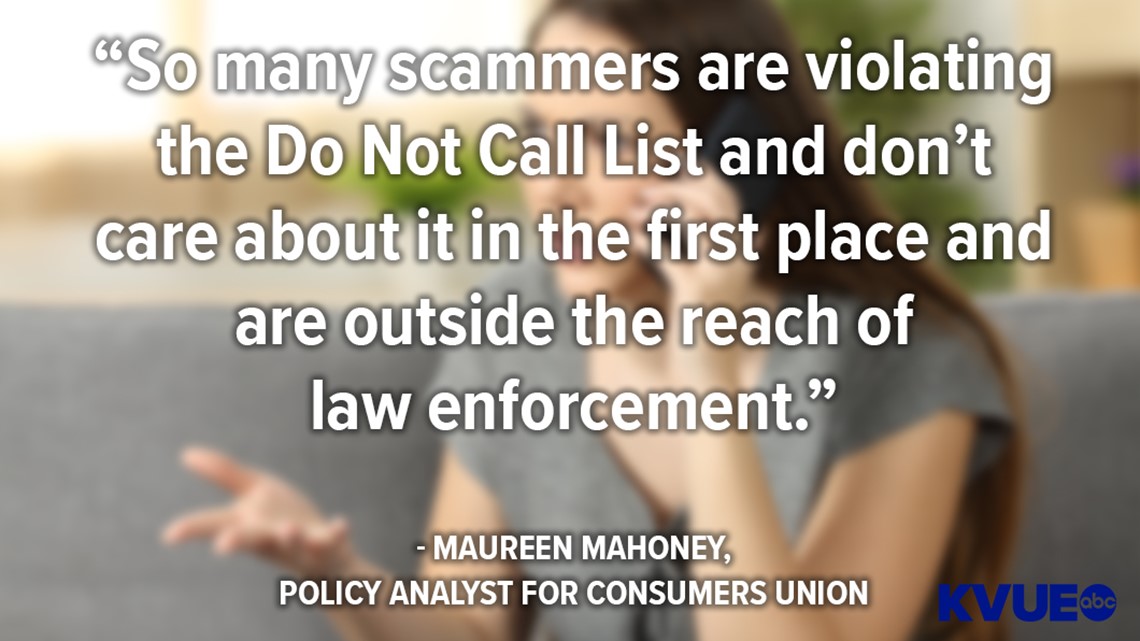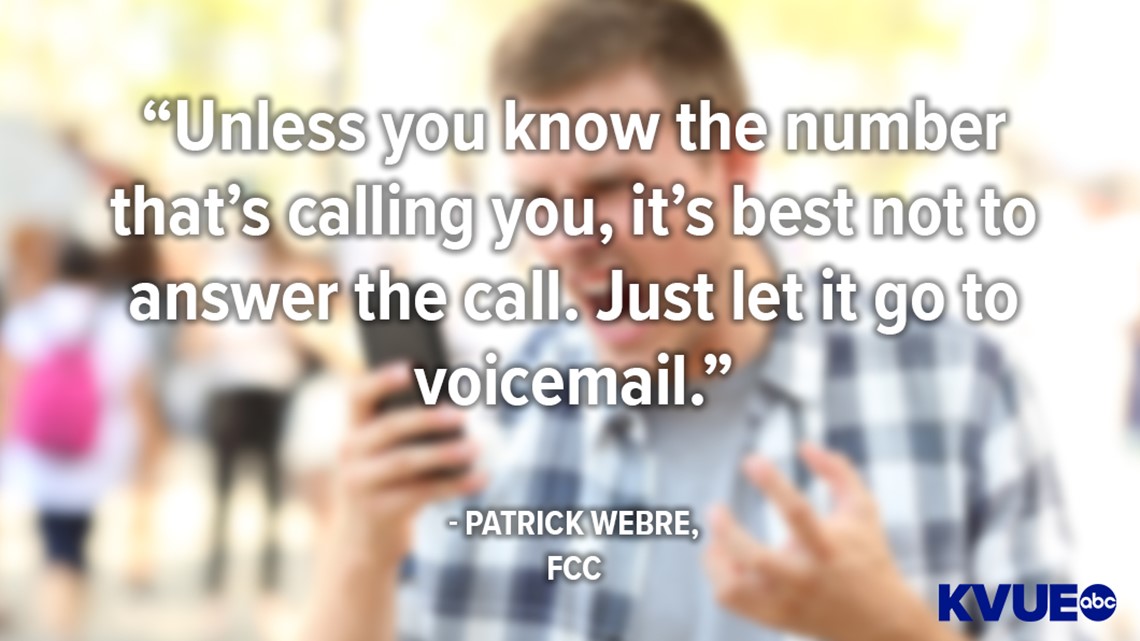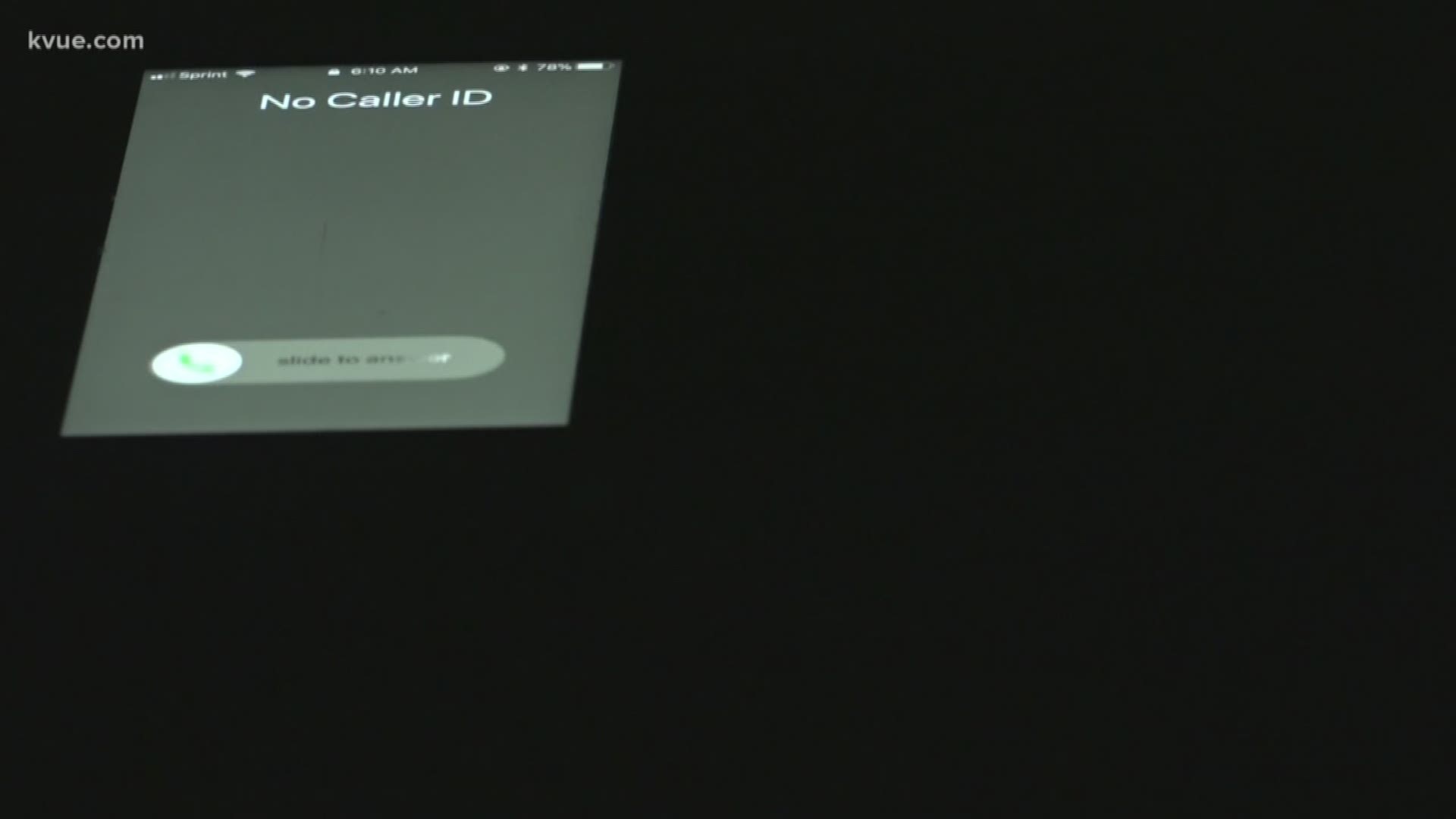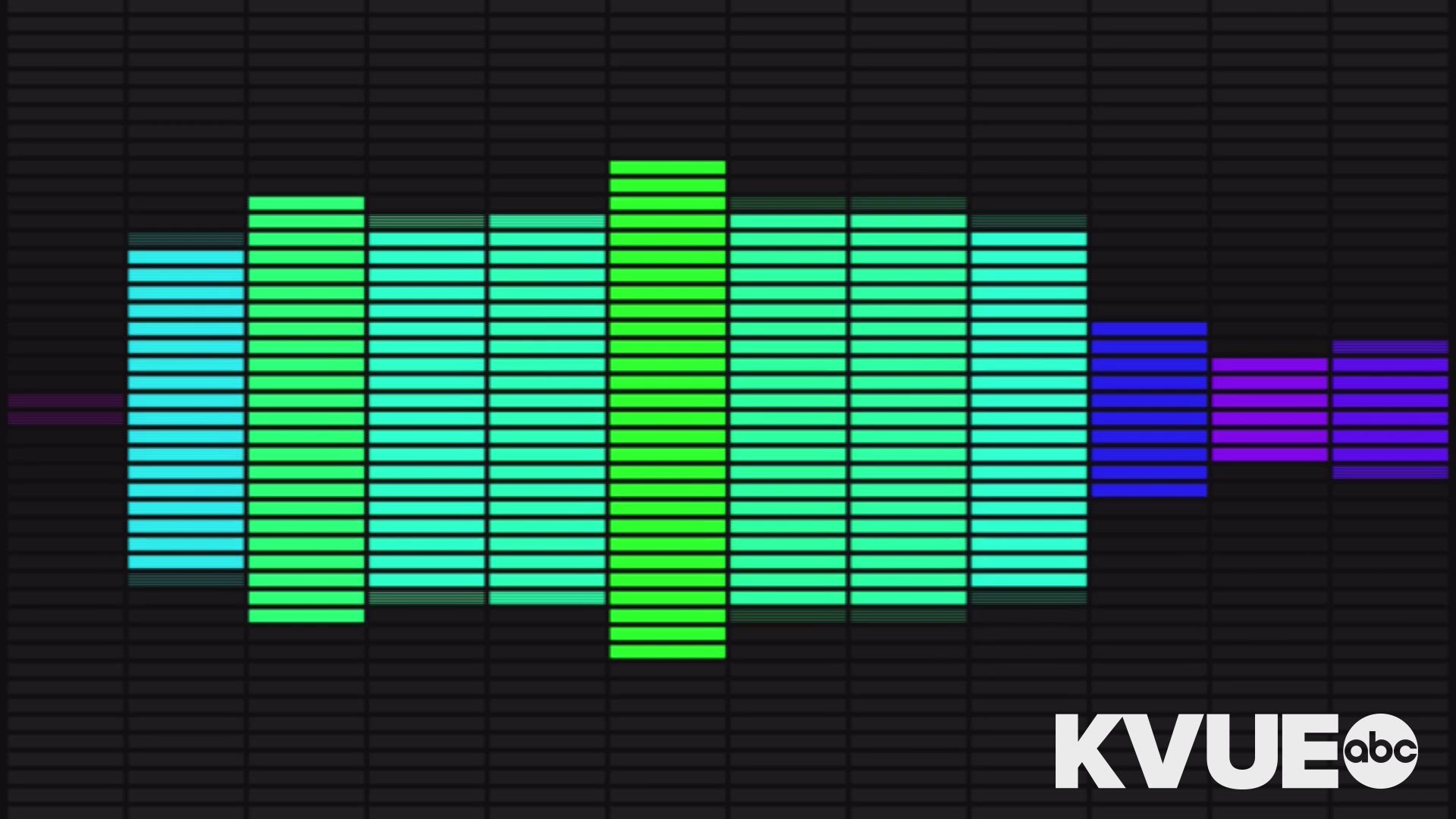The persistent and growing issue of illegal robocalls
We've all gotten them, and recently it seems like they just won't stop coming. We're talking about robocalls, and it turns out that many of them are illegal -- and could take your money if you aren't careful.

The growing concern with how robocalls have become an incessant and unavoidable part of technology is frustrating for many people.
While this was once an outlet for calls from a doctor’s office or a political campaign, it’s now grown into a place for illegal, fake messages trying to scam people out of their time and money.
The solution? Not as clear and easy to figure out as you might think.
Skirting Past the Do Not Call Registry
In 2003, the Federal Trade Commission (FTC) created the National Do Not Call Registry. The purpose of this list was to give people the option to automatically block calls from telemarketers.
Pat Beachy moved to Austin in 1996, as she is someone who signed up for this list. Lately, though, she has been getting all types of robocalls.
“I have like 40 blocked numbers,” Beachy said. “Lately, we’ve been getting phone calls from the Internal Revenue Service. They say there’s a warrant out for your arrest or that you have a court appearance and you need to show up. They say we need to call and follow up with them. None of it is true.”
Kristen Terkelsen also lives in Austin and is on the Do Not Call Registry as well. She has received a similar call -- but from a familiar-looking number.
“Calls will just come through from a 512 area code and we think it’s somebody that we might need to talk to,” Terkelsen said. “I even got a phone call from my own phone number at three in the morning and that’s a little scary. It’s an all-around nuisance not just at home but at work too.”


The ineffectiveness of this list and the familiar-looking robocall phone numbers are interconnected.
While the Do Not Call Registry does in fact block legitimate telemarketers, it was created during a time when technology hadn’t advanced enough for people to create auto-dialing systems like we have now.
Maureen Mahoney is a policy analyst for Consumers Union, a consumers advocacy group. She said technology has made it simple and profitable for people who create these illegal robocall systems -- especially creating them overseas.
“They’re taking advantage of auto-dialers and inexpensive international calling rates to send thousands -- if not millions -- of calls at once to consumers in the hopes of contacting someone and separating them from their money,” Mahoney said. “With how little it costs to send these out, there’s strong financial incentives for scam robocallers to contact consumers.”
With this development, people in America saw the number of fake calls come in at a rapid rate.
The FTC says Americans are bombarded with more than 2.5 billion robocalls a month.
In 2017 alone, more than 7 million people on the Do Not Call Registry filed complaints with the Federal Communications Commission (FCC) about robocalls -- almost twice as many complaints the FCC received in 2015 (559,563 of these people were from Texas).
“So many scammers are violating the Do Not Call List and don’t care about it in the first place and are outside the reach of law enforcement,” Mahoney said.


Robocallers Push Back
So with the Do Not Call Registry losing some of its effectiveness, the Federal Communication Commission decided to step in and try to alleviate this problem.
On November 16, 2017, the FCC adopted new rules that allowed voice service providers to proactively block certain type of robocalls that are likely to be fraud. Patrick Webre is the acting chief of consumer and governmental affairs bureau with the FCC and said this allows phone numbers that are not real, don’t have enough digits or can’t even be identified to stop going through.
“We wanted to focus on empowering phone companies to block unwanted calls before they even reach consumers,” Webre said. “This way they will never get that call and it will never bother them with a ring.”
What ended up happening, though, is scammers found a way around this loophole. There’s a reason Terkelsen is getting calls from her area code and even from her number. Scammers have created systems that can spoof a call by using real numbers from a person’s area code.
“Scammers are beginning to engage in what’s called neighbor spoofing,” Mahoney said. “They are able to input incorrect information into the caller I.D. that mimics the consumer area codes or their local exchange, which tricks the consumer into thinking that it’s a neighbor or local company that’s calling so they’ll pick up the phone.”
The actual recordings and messages have also changed, as scammers are starting messages in ways that will keep someone on the phone as long as possible.
“We’re hearing about robocallers starting messages with, 'Can you hear me now?' which kind of catches the consumer off guard,” Mahoney said. “They are hoping they’ll be more likely to engage with the message."
While Texas native Savannah Olson didn’t fall for her own illegal robocall that told her she owed the IRS money, her grandmother wasn’t as lucky.
“About five to 10 years ago, the call came on her home phone because she didn’t have a cell phone,” Olson said. “She got the call and it scared her to death. She immediately gave them a check by phone. Luckily, she called us and we ran to the bank to cancel the check before anyone could get money out of her account.”
For Olson, she believes people are getting better not falling for these scam phone calls. However, she’s more worried how this is changing our interaction with the digital world.
“We used to pick up the phone every time it rang or go to the door every time it rang,” Olson said. “Now we all have big no soliciting signs on our door and probably at the entrance or our neighborhoods. This secludes us from our neighbors and from our friends and from people we might actually want to get to know. It has had a really negative impact on society.”
Searching for a Solution
Many people wonder why government agencies can’t crack down on these scammers and shut down their systems. The issue is not only do most of these calls come from overseas, most scammers will bounce the call between a couple different phone companies before it actually reaches the person getting the call from their own company. So while jurisdiction can be hard to establish, tracking the calls can be just as much of a roadblock.
“A lot of times, it’s unfortunately not possible for us to know exactly where this call is coming from,” Webre said. “There’s just no accurate way, currently, of tracking the calls all the way back to where the call is coming from.”
Part of the solution is actually a part of Olson’s problem. When you physically answer one of these scam calls, most systems will actually transfer or sell that number to other scamming systems, letting them know that number is attached to someone who will pick up their phone.
“Once they know there’s a live person on the end of that call, they can either try to do the scam at that point or they can also use that number in the future to make further scams, or they can sell the number to other illegal robocallers,” Webre said. “Unless you know the number that’s calling you, it’s best not to answer the call. Just let it go to voicemail.”

And now that the phone companies have been given the technology to block these calls, Mahoney and Consumer Union want phone companies to start offering these services -- and offering them for free.
“We’re calling on the phone companies to offer free, effective technology to automatically identify and block robocalls before they reach consumers,” Mahoney said.
Phone companies differ on what they do or don’t offer.
AT&T launched AT&T Call Protect in December 2016. This is a free service for the company’s wireless users to automatically block fraudulent calls and provide screen alerts for suspected incoming spam calls.
On the other hand, Sprint makes you pay for this type of service. Sprint offers Sprint Premium Caller ID that displays the caller’s name on your incoming screen for callers who are not already on your contacts list. It costs $2.99 extra a month to get add this onto your plan.
Verizon doesn’t offer any service as a company but does support third-party systems to be attached to their providers.
While it seems like there’s no end in sight, there are some current precautionary methods you can take and apps you can use.
First and foremost, don’t give out your number to websites and companies when you don’t have to. This can create an influx of legitimate robocalls to make it to your phone. Often times when people give their phone number as they are buying a product, their number can then be sold or passed along to other similar businesses.
“If a consumer gives their number to a legitimate company or gets on a mailing list or wants to get updates or alerts, that’s a legal call that a company can make to you,” Webre said.


There are also many services you can use to reduce the number of incoming robocalls, but you need to be careful in which one you go with. Some apps or companies will end up sharing your data, which is a part of the problem in the first place. Make sure to do some research before connecting your phone number with a company.
Nomorobo is a service offered by some telecom providers directly and is supported by others. This has received high ratings for call-blocking and does not collect your contacts or sell your data. You can learn more about these services here.
The FCC is also working on a technology that would attach a hypothetical “checkmark” to every number in the world so when you receive an incoming call, you will know if it is legitimate or not before you even pick up the phone.
“Our main goal is to get to that point of validating a number,” Webre said.” It will take a while because a lot of times these calls go through a number of different phone companies and it will just take time to get all those details together.”



